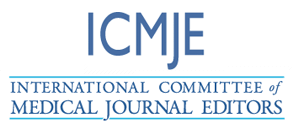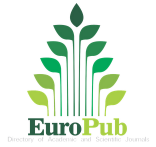How Hectic Shifts in Nursing Profession and Burnouts among Nurses Affect the Patient Care
DOI:
https://doi.org/10.55677/IJCSMR/V5I2-01/2025Keywords:
Nurse burnout, High-stress units, Burnout in urban hospitals, high patient volumes, staff wellbeing, healthcare quality, nurses’ mental healthAbstract
Nurse burnout is a highly prevalent issue in high-stress units, such as intensive care, emergency, and oncology units of urban hospitals like those in California and New York. The relentless pace, high patient volumes, and complex cases in these facilities and units heighten stress, leading to challenges to healthcare quality and staff wellbeing. Studies state that high patient volumes, particularly in emergency departments and intensive care units, often lead to overcrowding, understaffing, and prolonged shifts. For this, nursing practitioners (NPs) are forced to manage excessive workloads by themselves. This heightens their stress levels and also impairs their capacity to provide more individualized and compassionate care. In addition, there are complex cases in urban hospitals as patients often present with multiple comorbidities, cultural differences, and language barriers, which further exceed the intensity of the workload. These factors can lead to medication errors or lapses in patient monitoring. Ultimately, this directly affects healthcare quality and safety. Additionally, it is worth noting that the high-pressure environment is not conducive for nurses. It creates significant challenges for nurses’ mental health as they are continuously exposed to critical situations and emotional trauma, contributing to burnout, and other severe health issues. These issues are compounded by the stigma surrounding mental health support, leaving many NPs non-adherent to care seeking.
There have been reported cases involving errors in medical administration, poor patient outcomes, and mental health challenges for nurses which have been linked to high patient volumes. That said, the aim of this research paper is to explore the impact of burnout in urban hospitals and present strategies such as flexible scheduling, mental health support, and technological integration. Research supports utilizing such strategies to mitigate the negative effects. The research will utilize case studies from renowned hospitals in New York and California. This way illustrates some workable and effective evidence-based interventions and their outcomes in reducing burnout and improving patient care, nurse retention, and job satisfaction.
References
American Hospital Association. (2024). America’s Hospitals and Health Systems Continue to Face Escalating Operational Costs and Economic Pressures as They Care for Patients and Communities.
Ho, S. S., Sosina, W., DePierro, J. M., Perez, S., Khan, A., Starkweather, S., ... & Charney, D. S. (2024). Promoting Resilience in Healthcare Workers: A Preventative Mental Health Education Program. International Journal of Environmental Research and Public Health, 21(10), 1365. https://doi.org/10.3390/ijerph21101365
Hofmeyer, A., Taylor, R., & Kennedy, K. (2020). Fostering compassion and reducing burnout: How can health system leaders respond in the Covid-19 pandemic and beyond. Nurse education today, 94, 104502. https://doi.org/10.1016/j.nedt.2020.104502
Montgomery, A. P., Azuero, A., Baernholdt, M., Loan, L. A., Miltner, R. S., Qu, H., ... & Patrician, P. A. (2021). Nurse burnout predicts self-reported medication administration errors in acute care hospitals. The Journal for Healthcare Quality (JHQ), 43(1), 13-23.
https://doi.org/10.1097/jhq.0000000000000274
Prasad, K., McLoughlin, C., Stillman, M., Poplau, S., Goelz, E., Taylor, S., ... & Sinsky, C. A. (2021). Prevalence and correlates of stress and burnout among US healthcare workers during the COVID-19 pandemic: a national cross-sectional survey study. EClinicalMedicine, 35. https://doi.org/10.1016/j.eclinm.2021.100879
Rink, L. C., Silva, S. G., Adair, K. C., Oyesanya, T. O., Humphreys, J. C., & Sexton, J. B. (2023). Characterizing burnout and resilience among nurses: A latent profile analysis of emotional exhaustion, emotional thriving and emotional recovery. Nursing Open, 10(11), 7279-7291.
https://doi.org/10.1002/nop2.1980
Søvold, L. E., Naslund, J. A., Kousoulis, A. A., Saxena, S., Qoronfleh, M. W., Grobler, C., & Münter, L. (2021). Prioritizing the mental health and well-being of healthcare workers: an urgent global public health priority. Frontiers in public health, 9, 679397. https://doi.org/10.3389/fpubh.2021.679397
Todaro-Franceschi, V. (2024). Compassion fatigue and burnout in nursing: Enhancing professional quality of life. Springer Publishing Company. https://doi.org/10.1891/9780826155290
Downloads
Published
Issue
Section
License
Copyright (c) 2025 International Journal of Clinical Science and Medical Research

This work is licensed under a Creative Commons Attribution 4.0 International License.











